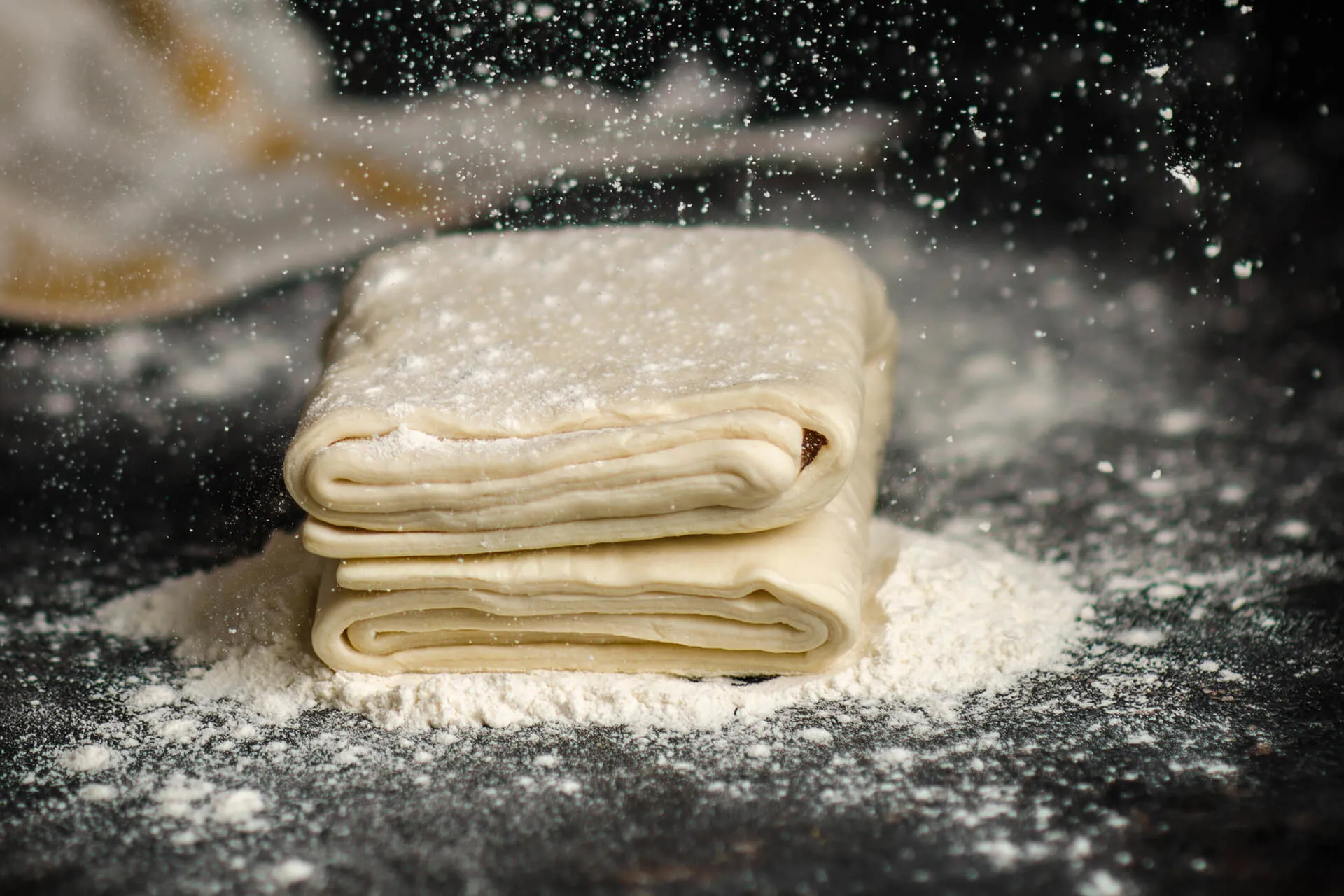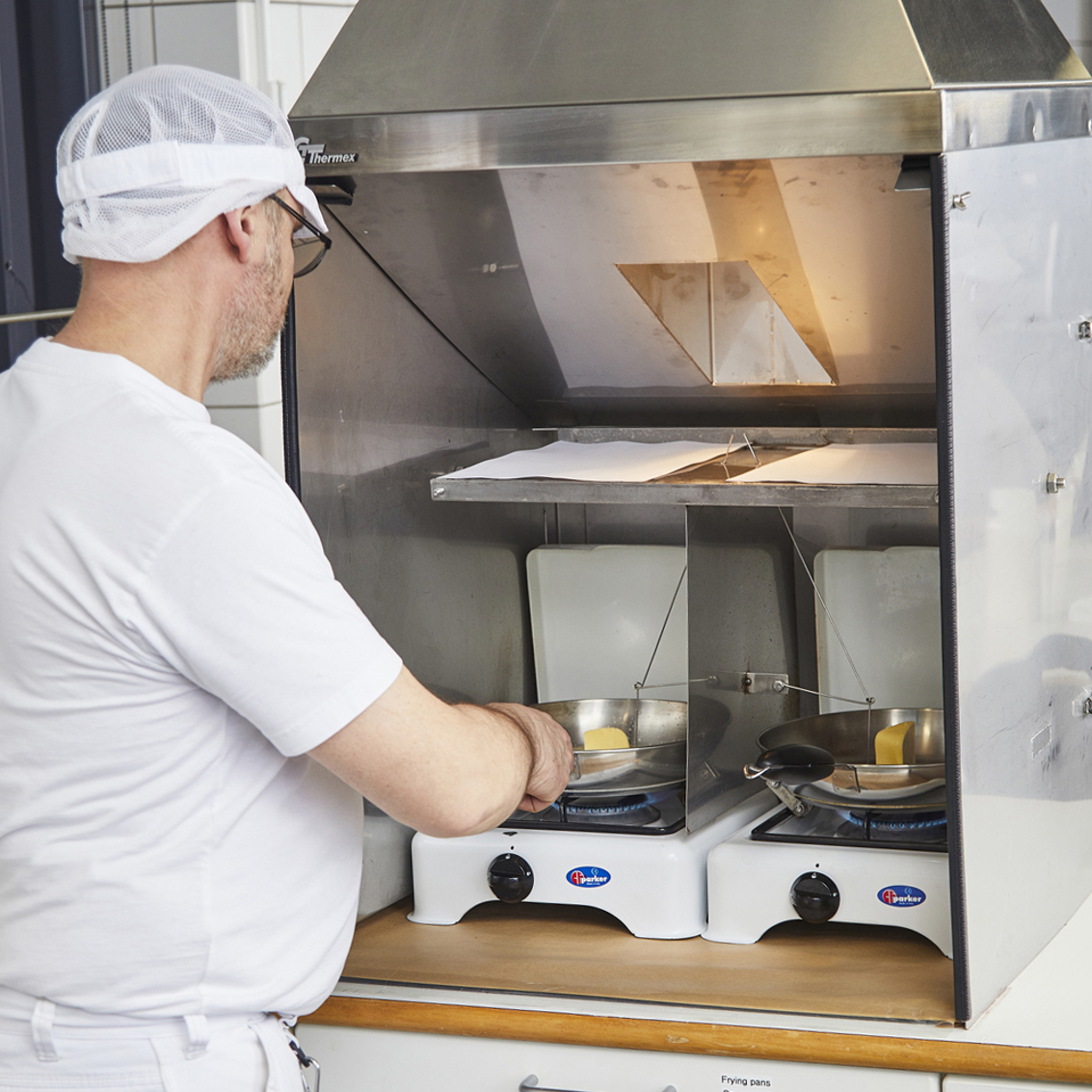
TECHNICAL ARTICLE
TECHNICAL ARTICLE
With global supply chains of sunflower oil and lecithin thrown into disarray by the Ukraine war, margarine manufacturers needed an affordable emulsifier alternative – and fast. Hamed Safafar, Application Manager & Senior Applications Scientist for Lipids, explains how Palsgaard worked around the clock to develop two new lecithin-free emulsifier blends in just eight weeks.
"Twenty years ago, as a customer of Palsgaard myself, I was highly impressed at how good the knowledge, service levels and technical support were. Now I’m working here, it’s a fantastic bank of expertise to tap into."
— Hamed Safafar, Application Manager & Senior Applications Scientist for Lipids, Palsgaard A/S

The sunflower is the national flower of Ukraine – the country that was, until February 23, 2022, the world’s biggest supplier of sunflower oil and lecithin. The invasion by Russia – the world’s second-largest sunflower oil producer – reduced exports to a trickle, with household margarine manufacturers left scrabbling for soybean or rapeseed alternatives as global prices rocketed.
Hamed Safafar, Application Manager & Senior Applications Scientist for Lipids at Palsgaard, explains: “Many businesses use sunflower lecithin alone or in combination with mono- and diglyceride emulsifiers, but after the war started, supplies were drying up. A lot of our customers have been using sunflower lecithin in their table margarine recipes for many years, and it was difficult for them – and for us – to comprehend that, essentially, this product had ceased to exist.”
With a 25-year career working in the lipid industry and a PhD in food technology, Hamed was only too aware of the problems this unprecedented situation presented. “Some of our customers didn’t have enough supply in the warehouse to carry on manufacturing. Many didn’t want to switch to soy lecithin as it has to be declared on the label as an allergen, while more than 80% of the global soybean crop is GMO, which is a big issue for European consumers.
“The result was increasing pressure on rapeseed lecithin and soaring prices. So, we needed to develop an alternative very quickly – an affordable, balanced product made from a blend of emulsifiers which could imitate, or even improve, the functionality of sunflower lecithin.”
Emulsifiers are at the heart of what Palsgaard does. Back in 1917, founder Einar Viggo Schou invented the world’s first commercial emulsifier, which revolutionised the margarine industry. By the 1930s, lecithin – a naturally occurring emulsifier derived today mainly from sunflower seeds, soybeans or rapeseed – was being used in margarine for its broad range of functions, including making margarine spreadable straight from the fridge, imparting great taste and mouthfeel, delivering excellent baking performance, and creating a good browning effect when frying.
Lecithin molecules have a lipophilic end attracted to fats and a hydrophilic end with an affinity for water, enabling them to bind together substances that do not otherwise blend smoothly, such as oil and water, explains Hamed.
“Margarine is a water-in-oil emulsion, with lecithin essential for enabling the water and oil to mix well. This emulsifying action improves the texture and inhibits bacterial growth by separating the water molecules, thereby extending the shelf life of the margarine. It also cuts right down on spatter when frying and enables good aeration in a cake batter, creating a soft light bake.”
Now Palsgaard was battling against the clock to develop lecithin-free products that could satisfy all these requirements. “Many of our customers operate in multiple locations, from Europe to Africa, with different recipes and process conditions for each region,” explains Hamed, “so we had to learn the effects of the process conditions and fat recipes on the functionality of the new product to be able to support everyone’s needs. We don’t want to produce anything that could create challenges for our customers – we sit in their chairs and think about what they need from us so we can supply the right product to them.”
With the increasing importance of leaner, cleaner labels, one of the development team’s goals was to streamline the raw ingredients in the new emulsifiers to just two E numbers.
“The first thing we did was make a product with citric acid esters of mono- and diglycerides [E472c], and mono- and diglycerides [E471]. After two months of intense experimentation, we came up with a completely lecithin-free recipe that worked well and was ready to be tested on customer sites. Another two months later, we were sending out samples, with many of our customers using them immediately.”
The results are Palsgaard® 0170, based on RSPO SG-certified palm oil, and Palsgaard® 0172, based on rapeseed. “Our RSPO SG-certified palm oil is readily available and has a far higher yield than sunflower or rapeseed, but for those who prefer to be palm-free, we have also created an option with rapeseed, which is cultivated widely in many regions, including Europe and Canada.”
“As we worked to optimise the blends, we must have gone through more than 200 trials. But just two months after taking on this challenge, the new products were ready to be tested in customer sites, and we were sending out samples four months into the project, with many of our customers using them immediately.”

Would Palsgaard have produced lecithin-free emulsifiers if the Ukraine war hadn’t happened? “Yes,” affirms Hamed, “although development would have been slower, as it typically takes a year for a new product to come to market. The thing is, lecithin can’t provide all the functionality many manufacturers require, and not everyone wants to use it in any case, so we would have responded to the industry’s increasing demand for lecithin-free margarine emulsifiers even without the situation in Ukraine.
“For one thing, lecithin isn’t the strongest emulsifier, so it has to be used in relatively high ratios, which has a cost implication. It’s also naturally dark in colour, which can affect product appearance, whereas our lecithin-free products are white and therefore have no influence on margarine colour.
Another issue is that because lecithin contains some liquid oil, it can become a bit sticky in higher temperatures, which presents a handling problem. Our new products create a stable emulsion that doesn’t get sticky even in a warm climate where no cold transport chain is available. We’ve also worked hard to ensure they are even better than lecithin at reducing spatter.”
Two other key areas where the new lecithin-free emulsifiers deliver are taste neutrality and stability. “Lecithin’s phospholipid balance is affected by crop condition, which means every new batch has to be tested and balanced, as there is always variation,” explains Hamed. “With our lecithin-free emulsifiers, any variation is extremely low, so it’s much easier for customers to rely on them for continuous production.”
Collaboration is key to Palsgaard’s success, and never more so than in the rapid development of the new lecithin-free emulsifiers. “We have a really good teamwork ethic at Palsgaard. Success is achieved by people from different departments working together. These days, you don’t need a hero – you need a good team.
“It’s also helpful that Palsgaard is so strong in the development area, with food technologists who have been working here for over 30 years creating new products. Some of our colleagues are like walking encyclopaedias. Twenty years ago, as a customer of Palsgaard myself, I was highly impressed by the knowledge, service levels and technical support. Now I’m working here, it’s a fantastic bank of expertise to tap into.”
The other side of the collaboration equation is the customer, whose input is encouraged and supported throughout the development process. As well as providing a portfolio of standard recipes and processes for the new lecithin-free emulsifiers, Palsgaard has a small-scale pilot facility capable of producing batches of up to 30kg, where manufacturers are helped to develop the products for specific applications without needing to produce tons of margarine.
“We can also use it to establish optimal processing conditions, so our customers don’t need to spend time and materials doing this themselves,” adds Hamed. “The end result is that our new emulsifiers still yield the familiar taste and functionality that people are used to. Customers could also potentially use less compared with lecithin-containing products, which is a cost advantage. But, for me, the highlights of our new lecithin-free emulsifiers are that they confer greater stability, better texture, a slightly higher melting point and better spatter control.”
Just like sunflower lecithin, but better.
Contact us to order samples of Palsgaard® 0170 and Palsgaard® 0172 to try in our library of recipes.